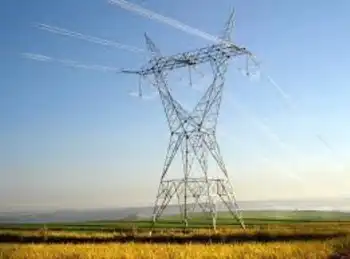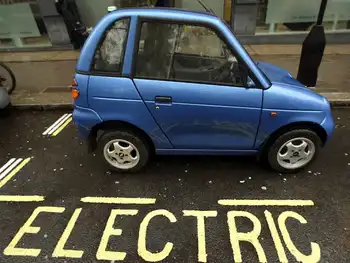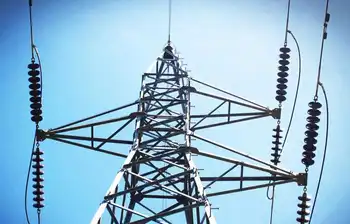Waste-to-energy plant goes ahead in Hawaii
By Honolulu Advertiser
NFPA 70b Training - Electrical Maintenance
Our customized live online or in‑person group training can be delivered to your staff at your location.

- Live Online
- 12 hours Instructor-led
- Group Training Available
The $125 million facility would be designed, built and operated by Wheelabrator Technologies Inc. and would burn about 230 tons of trash or about 40 percent of the solid waste generated on the island each day. That rubbish now goes into the Hilo landfill, which is nearly full and is expected to close in about four years.
The proposed plant would be a fraction of the size of the H-Power plant in Campbell Industrial Park, which burns about 2,000 tons of trash a day.
Under the contract awarded to Wheelabrator by Big Island Finance Director William Takaba, the incinerator would be built near the existing Hilo landfill and would be completed in about four years. It would generate about 3.5 megawatts of electricity, which is enough to power about 3,500 homes.
The contract must be approved by the Hawai'i County Council, which is expected to hold public hearings before voting.
Bobby Jean Leithead Todd, director of the county Office of Environmental Management, said she expects the council will weigh the cost of the incinerator against other options such as hauling the trash across the island to the Pu'uanahulu landfill in North Kona, sending the trash off the island on barges, or building a new landfill in the Hilo area.
"I think the issues are going to be price, and also addressing anyone's concerns over the technology," Leithead Todd said. "I think people here, because they have not lived with H-Power, probably have some concerns."
Leithead Todd said the large up-front cost of the plant needs to be balanced against its potential income in a community with some of the highest electricity rates in the nation. The power produced by the plant would also reduce imports of diesel fuel by about 19,000 barrels a year, she said.
"Once we've paid for the facility, the fact that it produces revenue in terms of electricity sales is going to profoundly impact the bottom line," Leithead Todd said. "It will be like H-Power has proved for Honolulu in the sense that at some point in time it starts to generate revenue because of the electricity sales."
The plant would cost the county almost $18.4 million a year once it begins operations, including debt payments and operating fees of more than $7.1 million a year charged by Wheelabrator, Takaba said.
That would be partly offset by nearly $6.9 million a year the county expects to earn in electricity sales, and that income would increase if the cost of electricity goes up.
After figuring in the power production earnings, the plant would cost the county almost $11.5 million a year including debt payments, which works out to about $135 per ton of trash burned, Takaba said. By comparison, he estimated a new landfill would cost about $100 per ton.
"I think there's probably a lot of support for the concept of taking solid waste and using it to produce electricity. I think the devil is going to be in the details," Leithead Todd said. "People want to know what are the controls, what kinds of safeguards have you got on emissions," she said.
She said the project is unlike old-fashioned incinerators because of today's strict federal emission controls and said the new plant will be a cleaner source of power than diesel-fired facilities Hawai'i Electric Light Co. now uses to generate power on the Big Island.
"I think people should go to City and County (of Honolulu) and take a look at H-Power," she said. "I think there was tremendous concern over it before it was built, and now you don't hear much about it. There isn't much squawking, and in fact they're talking about expanding it. Once you build it, once you get over the initial concerns, it's not a big deal."
Waste Management Inc. is the parent company of Wheelabrator, which had $13.4 billion in revenue in 2006 and owns or operates 16 plants across the nation that use similar technology, according to materials provided by the company.
The plan for a garbage-to-energy plant grew out of the Big Island's integrated solid waste plan approved by the administration and the council, which ruled out a proposal to truck rubbish across the island to the Pu'uanahulu landfill each day, and rejected the idea of building a new landfill in Hilo.
The council in 2005 instructed Mayor Harry Kim's administration to solicit proposals for a waste reduction facility, and the county invited companies to submit proposals for various technologies.
Leithead Todd said a limited number of companies responded because some firms don't want to do business in an isolated place such as Hawai'i, while others concluded the county doesn't generate enough trash to make their technologies viable.
The county also required that companies making proposals have a plant that had been operating for at least two years so county officials could study the facility.
In the end the county narrowed the choices to three waste-to-energy mass burn companies that had the required financial backing and expertise, she said. That field was narrowed to Wheelabrator last year.
If the council rejects the waste-to-energy contract, the county would reconsider options such as exporting trash off the island, trucking it to the Pu'uanahulu landfill, extending the life of the current landfill or constructing a new landfill, she said.











